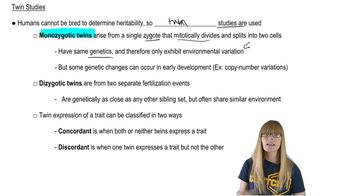In human gestational development, abnormalities of the closure of the lower part of the mid-face can result in cleft lip, if the lip alone is affected by the closure defect, or in cleft lip and palate (the roof of the mouth), if the closure defect is more extensive. Cleft lip and cleft lip with cleft palate are multifactorial disorders that are threshold traits. A family with a history of either condition has a significantly increased chance of a recurrence of mid-face cleft disorder in comparison with families without such a history. However, the recurrence risk of a mid-face cleft disorder is higher in families with a history of cleft lip with cleft palate than in families with a history of cleft lip alone. Suppose a friend of yours who has not taken genetics asks you to explain these observations. Construct a genetic explanation for the increased recurrence risk of mid-face clefting in families that have a history of cleft disorders versus families without a history of such disorders.
Table of contents
- 1. Introduction to Genetics51m
- 2. Mendel's Laws of Inheritance3h 37m
- 3. Extensions to Mendelian Inheritance2h 41m
- 4. Genetic Mapping and Linkage2h 28m
- 5. Genetics of Bacteria and Viruses1h 21m
- 6. Chromosomal Variation1h 48m
- 7. DNA and Chromosome Structure56m
- 8. DNA Replication1h 10m
- 9. Mitosis and Meiosis1h 34m
- 10. Transcription1h 0m
- 11. Translation58m
- 12. Gene Regulation in Prokaryotes1h 19m
- 13. Gene Regulation in Eukaryotes44m
- 14. Genetic Control of Development44m
- 15. Genomes and Genomics1h 50m
- 16. Transposable Elements47m
- 17. Mutation, Repair, and Recombination1h 6m
- 18. Molecular Genetic Tools19m
- 19. Cancer Genetics29m
- 20. Quantitative Genetics1h 26m
- 21. Population Genetics50m
- 22. Evolutionary Genetics29m
20. Quantitative Genetics
Heritability
Problem 27a
Textbook Question
Answer the following in regard to multifactorial traits in human twins. If the trait is substantially influenced by genes, would you expect the concordance rate to be higher in MZ twins or higher in DZ twins? Explain your reasoning.
 Verified step by step guidance
Verified step by step guidance1
Understand the concept of multifactorial traits: These traits are influenced by both genetic and environmental factors. Examples include height, skin color, and susceptibility to certain diseases.
Define MZ (monozygotic) twins and DZ (dizygotic) twins: MZ twins are genetically identical because they originate from a single fertilized egg that splits into two embryos. DZ twins share about 50% of their genes, similar to regular siblings, as they originate from two separate fertilized eggs.
Consider the genetic influence on concordance rates: Concordance rate refers to the likelihood that both twins exhibit the same trait. If a trait is substantially influenced by genes, MZ twins, who share 100% of their genetic material, are more likely to have a higher concordance rate compared to DZ twins, who share only 50% of their genetic material.
Factor in environmental influences: While genes play a significant role, environmental factors can also impact concordance rates. However, for traits with strong genetic influence, the genetic similarity of MZ twins will result in a higher concordance rate compared to DZ twins.
Conclude the reasoning: Since MZ twins share all their genetic material, traits with substantial genetic influence will show higher concordance rates in MZ twins than in DZ twins. This is because the genetic similarity directly impacts the expression of such traits.
 Verified video answer for a similar problem:
Verified video answer for a similar problem:This video solution was recommended by our tutors as helpful for the problem above
Video duration:
1mPlay a video:
Was this helpful?
Key Concepts
Here are the essential concepts you must grasp in order to answer the question correctly.
Concordance Rate
Concordance rate refers to the likelihood that both twins in a pair exhibit the same trait or condition. In genetic studies, this measure helps determine the influence of genetics versus environment on traits. A higher concordance rate in monozygotic (MZ) twins compared to dizygotic (DZ) twins suggests a stronger genetic component to the trait.
Recommended video:
Guided course

New Alleles and Migration
Monozygotic vs. Dizygotic Twins
Monozygotic (MZ) twins, or identical twins, originate from a single fertilized egg that splits into two embryos, sharing 100% of their genetic material. In contrast, dizygotic (DZ) twins, or fraternal twins, develop from two separate eggs fertilized by different sperm, sharing about 50% of their genes. This genetic difference is crucial for understanding the heritability of traits.
Recommended video:
Guided course

Twin Studies
Multifactorial Traits
Multifactorial traits are influenced by multiple genes and environmental factors, making their inheritance complex. Examples include height, intelligence, and susceptibility to diseases. In the context of twins, examining concordance rates for multifactorial traits helps researchers discern the relative contributions of genetic and environmental influences.
Recommended video:
Guided course

Traits and Variance

 7:04m
7:04mWatch next
Master Calculating Heritability with a bite sized video explanation from Kylia
Start learningRelated Videos
Related Practice
Textbook Question
423
views
